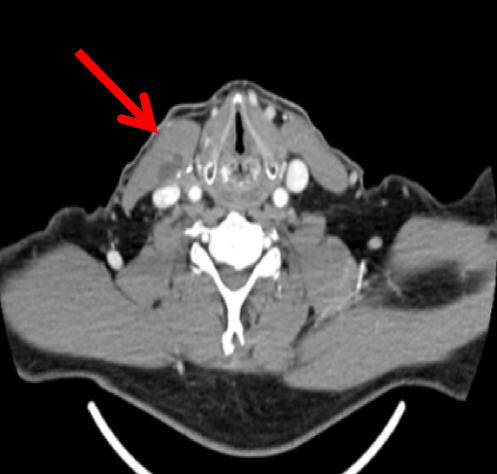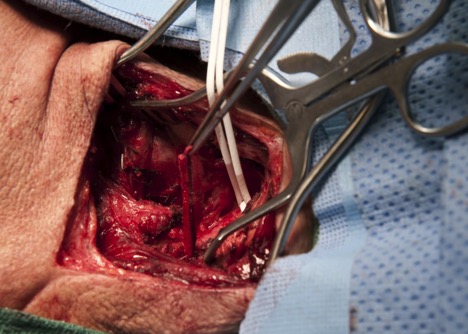Back to 2016 Annual Symposium ePosters
Carotid Patch Rejection with Arterial Continuity: Case Report and Review of the Literature
Michael F. Amendola, MD, Jonnathan Bennett, MD, John Pfeifer, MD.
VA Medical Center/VCU Health System, Richmond, VA, USA.
BACKGROUND:
Patch angioplasty is now considered the current standard of care for repair after a carotid endarterectomy. Although patch placement with synthetic material does carry a risk of infection these rates are known to be less than 1% in two systematic reviews.
METHODS:
We present a case of a 69-year-old male with a past medical history of right carotid endarterectomy for symptomatic 80% carotid stenosis in 2006. The procedure was uneventful with patch angioplasty undertaken with a Dacron carotid patch and Prolene sutures. The patient represented to his primary care physician eight years later with a nine-month history of intermittent right neck swelling, odynophagia, and fatigue. He was taken to the operating room for neck exploration and found to have a four-centimeter phlegmon deep to the belly of the sternocleidomastoid. Exploration of the carotid sheath found with only a short segment of the Dacron patch associated with the carotid artery. The Dacron patch was removed by unwinding the running suture with gentle traction (Figure 2). The remaining aspects of the common carotid and internal carotid artery encased in scar tissue and with no bleeding or pseudoaneurysm noted.
RESULTS:
The patient was observed for a day and discharged without complication after drain removal. The patient returned in one month with a carotid duplex that revealed no pseudo-aneurysm, stenosis or reformation of abscess. Our case shows that prosthetic carotid patch expulsion can occur as late as eight years after placement and this report adds a fourth case regarding this exceedingly rare phenomenon.
CONCLUSIONS:
Vascular surgeons should be aware of the possibility of prosthetic patch extrusion in the setting of chronic surgical site symptoms and normal vascular radiographic studies.  
Back to 2016 Annual Symposium ePosters
|








